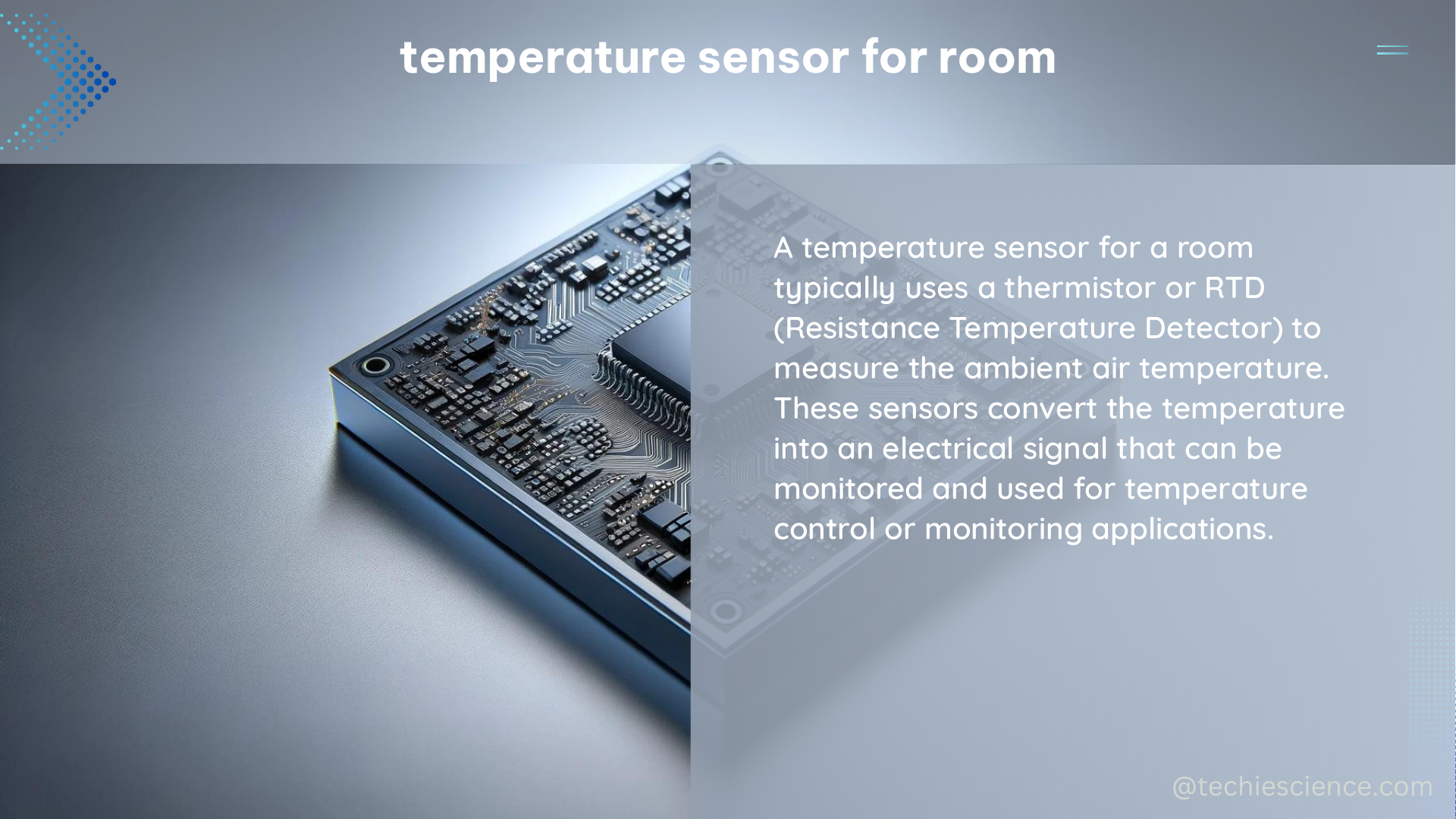Temperature sensors are essential for maintaining a comfortable and energy-efficient indoor environment. Whether you’re managing a small home or a large commercial space, understanding the optimal placement and configuration of temperature sensors can make a significant difference in your ability to monitor and control the temperature effectively. In this comprehensive guide, we’ll delve into the technical details and best practices for using temperature sensors in a room setting.
Recommended Number of Temperature Sensors Based on Room Volume
The recommended number of temperature sensors for a room depends on the volume of the space. Here’s a breakdown of the guidelines:
Rooms up to 2 Cubic Meters
For a room with an internal volume of up to 2 cubic meters, it is recommended to use 10 temperature sensors. Out of these, 9 sensors should be placed within the usable volume, and an additional sensor should be positioned near the probe of the device that monitors and/or controls the system.
This placement ensures that the corners of the room, which are potential worst-case locations for temperature extremes due to their exposure to outside air temperature and lack of air circulation, are monitored. Additionally, the center of the usable volume is also monitored, as it is farthest from the outside air and most likely to have good air circulation, making it another potential worst-case location.
Rooms up to 20 Cubic Meters
For a room with an internal volume of up to 20 cubic meters, it is recommended to use 16 temperature sensors. Out of these, 15 sensors should be placed within the usable volume, and an additional sensor should be positioned near the probe of the device that monitors and/or controls the system.
The extended length of the sides in bigger chambers makes the center of each pane a point of interest due to its proximity to the center of the usable volume. This placement helps to ensure that temperature variations across the entire space are accurately captured.
Factors Affecting Temperature Variability

In addition to the room volume, there are several other factors that can contribute to temperature variability within a space. These include:
- HVAC Equipment Location: The size and location of the HVAC equipment can impact the temperature distribution in the room.
- Sun-Facing Walls: Walls that are exposed to direct sunlight can experience higher temperatures compared to other areas of the room.
- Low Ceilings or Roofs: Rooms with low ceilings or roofs can have different temperature profiles compared to spaces with higher ceilings.
- Geographic Location: The geographic location of the building can influence the outdoor temperature and humidity, which can affect the indoor environment.
- Airflow: The airflow patterns within the room can create temperature gradients, with some areas experiencing better air circulation than others.
- Outdoor Temperature Variability: Fluctuations in the outdoor temperature can impact the indoor temperature, especially in spaces with poor insulation or ventilation.
- Workflow and Equipment Movement: The movement of people and equipment within the room can disrupt the temperature distribution and create localized hot or cold spots.
- Loading and Storage Patterns: The way products or materials are stored or loaded in the room can affect the temperature distribution.
- Equipment Capabilities: The performance and efficiency of the HVAC equipment can influence the ability to maintain a consistent temperature throughout the space.
- Operating Procedures: The way the HVAC system is operated, such as the set points, schedules, and control strategies, can impact the temperature distribution.
Measuring Room Temperature with Smartphones
While many people may think they can use their smartphones to measure room temperature, it’s important to note that most smartphones do not have a built-in temperature sensor. Some applications claim to turn your smartphone into a thermometer, but their effectiveness is questionable, as they typically rely on weather data based on the GPS position of the device, which may not accurately reflect the actual temperature in the room.
To accurately measure the room temperature, a connected weather station can be a more reliable solution. These devices are designed to measure the temperature, humidity, pressure, and other weather data within the room and then transmit the information to your smartphone. This allows you to monitor and control the heating, save energy, and optimize the temperature in your home or office.
Conclusion
Proper placement and configuration of temperature sensors are crucial for maintaining a comfortable and energy-efficient indoor environment. By understanding the recommended number of sensors based on room volume and considering the various factors that can affect temperature variability, you can ensure that your temperature monitoring system is accurate and effective. Additionally, while smartphones may not be the most reliable option for measuring room temperature, connected weather stations can provide a more accurate and comprehensive solution for monitoring and controlling the temperature in your space.
Reference:
– How Many Sensors Should I Use in a Thermal Mapping Study?
– ThermoPro TP50 Digital Thermometer Indoor Outdoor Thermometer Room Temperature Thermometer
– Room Temperature: The Comfort Guide

The lambdageeks.com Core SME Team is a group of experienced subject matter experts from diverse scientific and technical fields including Physics, Chemistry, Technology,Electronics & Electrical Engineering, Automotive, Mechanical Engineering. Our team collaborates to create high-quality, well-researched articles on a wide range of science and technology topics for the lambdageeks.com website.
All Our Senior SME are having more than 7 Years of experience in the respective fields . They are either Working Industry Professionals or assocaited With different Universities. Refer Our Authors Page to get to know About our Core SMEs.